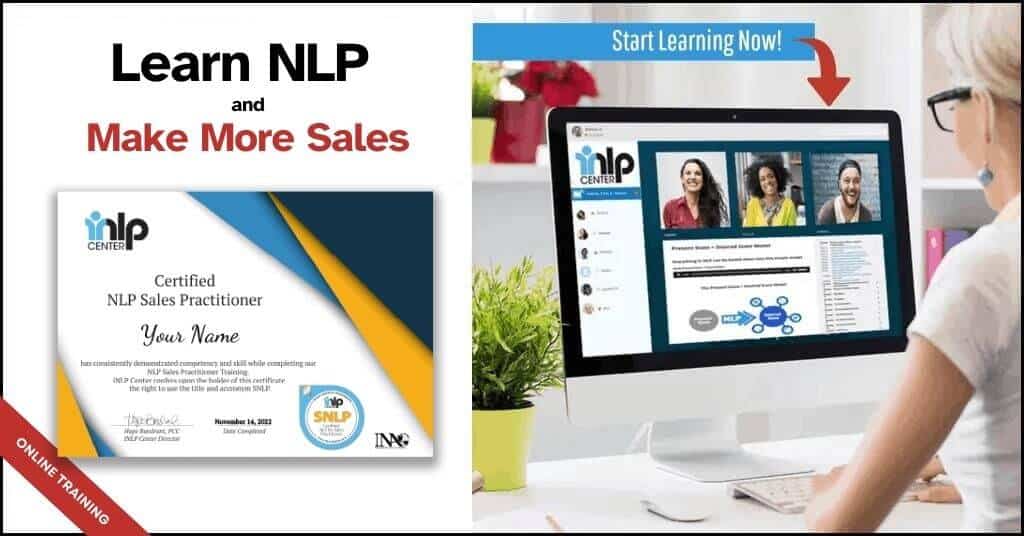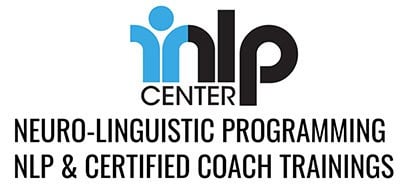NLP sales techniques use simple ideas from psychology to help you sell better.
These tools can make a big difference in how you connect with customers and close deals. Imagine being able to meet a potential buyer with absolute confidence.
You build and implement a rapport profile that allows you to communicate and behave in a way that is so resourceful that you will not have to ask for a sale but rather the prospect will ask you to buy. This is where Neuro-Linguistic Programming (NLP) comes into play.
In this post, we’ll look at five powerful techniques: matching and mirroring—verbal and non-verbal, meta programs, future pacing, and anchoring.
Ready to boost your sales skills? Let’s dive in.
1. Verbal Matching and Mirroring
Matching and mirroring involves subtly mimicking the verbal communication style of your prospect to create a sense of similarity and connection.
When you match and mirror, pay attention to the visual, auditory, and kinesthetic cues your prospect exhibits and mirror them back in your behavior.
For example, let’s say your prospect speaks in a visual language. They use phrases like “I see what you mean” or “That looks good to me.” You can then mirror this by incorporating visual language into your responses.
Similarly, if they use auditory cues such as “That sounds great” or “I hear you loud and clear,” you can respond in kind.
Also, pay attention to kinesthetic phrasing such as “This purchase will have a big impact on our family” or “I’m trying to get a grasp on the features of this product.”The key is mirroring, not mocking. Be subtle but consistent with this technique and notice how your rapport and trust skyrocket.
2. Non-Verbal Matching and Mirroring
Non-verbal matching and mirroring is a technique in sales where you subtly replicate your prospects’ physiology: their body language, facial expressions, mannerisms, and even breathing.
This technique creates rapport, which is essential for gaining the prospect’s trust and increasing your chances of making a sale. It creates a sense of familiarity and likeness. It makes the prospect feel more comfortable and receptive to your message.
Much of human communication occurs subconsciously through non-verbal cues such as body language, facial expressions, and gestures. By mirroring these cues, you signal to the prospect that you are alike. And studies show we prefer people who are similar to us.
Observe the prospect’s body language closely during your interaction. Notice their posture, gestures, and facial expressions. Then, subtly mimic these cues in your behavior.
Here are some examples:
If they lean forward, slightly lean forward as well.
If they gesture with their hands while speaking, do the same. The key is to mirror their non-verbal cues naturally and unobtrusively.
If you notice that a prospect is sitting with their arms crossed, indicating defensiveness, you might adopt a similar posture to establish a sense of understanding and empathy. As the conversation progresses and rapport is established, you can gradually adjust your body language to match the prospect’s level of engagement and openness.
Be subtle and your prospects won’t notice what you’re doing. Yet subconsciously, it will signal to them that you are attentive, empathetic, and in tune with their needs.

3. Meta Programs
Meta programs are the unconscious filters through which individuals perceive and interpret the world—beliefs, preferences, motivations, risk tolerance, decision-making strategies, etc.
When you understand your prospects’ meta programs, you can tailor your communication style to resonate with what they consider to be important and true.
By asking strategic questions and actively listening to your prospect’s responses, you can gain insights into their meta programs and adapt your sales approach accordingly. Try to find out:
- How do they choose what’s important?
- Do they tend to chase the things they want or avoid the things they don’t?
- Do they make decisions out of logic or emotion?
- Do they seek validation from external sources or rely on their intuition?
Here are two examples.
If your prospect tends to make decisions based on logical reasoning and data-driven analysis, focus on facts and figures to make your case.
If your prospect is motivated by achievement and recognition (versus security and stability), show them how your product or service can help them reach their goals and stand out from the competition.

4. Future Pacing
Future pacing is a simple NLP sales technique that uses their imagination.
In short, you help customers project themselves in the future to see the benefits of your product. The clearer the vision, the more excited and certain they will feel about the purchase.
The technique is here to help them understand how your product can affect and transform their lives. It appeals to their emotions and dreams rather than their logic.
The first step, as always, is to build rapport. Any of the techniques in this post will feel manipulative if you don’t first take the time to create a genuine connection with your prospect.
Then, paint a vivid picture of the future outcome your product or service can provide, using descriptive language to evoke emotions and create a compelling vision.
Guide your prospect through this imagined scenario, emphasizing the positive changes and benefits they will experience.
Finally, anchor this vision by associating it with your product or service, making it an integral part of their desired future.
How far ahead into the future should you pace? This depends on your product. For smaller purchases, the benefits might be immediate and short-lived, in which case it might be a few days. You might say: “Imagine waking up tomorrow, feeling refreshed and ready to tackle the day.”
Other products have benefits that ripple and magnify through time, in which case you can use a larger timeframe. This would sound like: “Imagine sitting on the front porch of your dream house in 5 years, smiling, thinking back to today as the pivotal moment that transformed your life forever.”
Use the intel you’ve gathered during your meta-program investigation (see the technique above) to tailor the vision of the future to what they find important and care about.

5. Anchoring
Anchoring is a powerful NLP technique used in sales. It ties specific emotions to products or services.
Emotions significantly influence purchasing decisions and anchoring gives us a way to put prospects in a positive state when interacting with our products and services.
Here’s how it works. When you notice a prospect in a particular state—negative or positive depending on the result you want to achieve—you establish a unique anchor.
An anchor can be a touch, a glance, or a phrase spoken in a certain tone. The more unique the anchor, the more effective it can be.
Through repetition, the prospect’s subconscious will link the anchor with the emotion.
Sounds too good to be true? Your life is full of anchors that your subconscious adopted unintentionally.
Have you ever walked past a bakery and the smell reminded you of your grandmother’s kitchen? Or met someone whose mere look calmed you down? Or heard a song that brought back vivid memories?
These examples are unintentional anchors but one can also set anchors deliberately.
Imagine selling a vacation package and you want prospects to feel great about buying from you.
Start by eliciting the desired emotion, say excitement. To do so, you could ask the prospect about a memorable vacation. They tell you about a trip to Thailand they went on last year. And as they do, you see them *light up*.
At that moment, introduce your anchor—for example, an enthusiastic “Fabulous!” paired with a warm smile.
As you ask more about their experience—about the food, the resort, or a favorite memory—re-activate the anchor whenever you see them in a positive emotional state. Repeating this strengthens the anchor.
Now, when you pitch your product or try to close the sale, use the anchor. Your prospects will feel excited, though they won’t understand why. This makes them more likely to accept your offer, boosting your chances of a successful deal.
Are NLP Techniques Effective in Sales?
Neuro-Linguistic Programming (NLP) is more than just a tool for psychologists—it’s a game-changer for sales professionals, too.
At its heart, NLP is about three things: how we think (neuro), how we communicate (linguistic), and how we act (programming). Understanding these elements can transform your sales approach. NLP helps you decode and utilize the language and non-verbal cues that dictate buyer behavior, giving you a clearer path to influence and success.
Related: Sales Tips: 7 Ways to Increase Your Sales You May Not Know
NLP sales techniques like anchoring and matching and mirroring tap into natural communication and decision-making processes. Sales professionals leverage these techniques to build rapport, establish trust, and sway buying behavior. The results speak for themselves.
When used ethically and genuinely, these methods don’t just close deals—they build lasting relationships and drive success.
NLP teaches us to recognize and respond to subtle cues in conversations. This means you can guide interactions more effectively and steer them towards the outcomes you want. Imagine being able to look behind the curtain of human interaction, understanding the why and how behind every communication. That’s what NLP offers.



